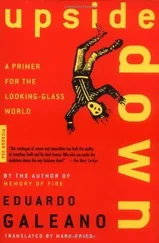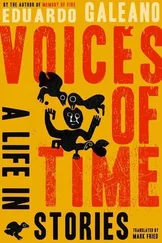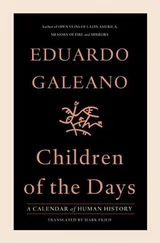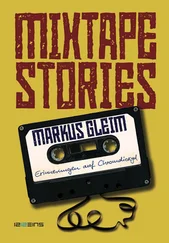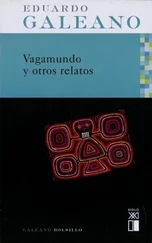Nijinsky spun in furious whirlwinds and left the ground and broke apart in the air and fell back, thunderstruck, and he rolled about as if the marble floor were mud, and then he began to spin again and, rising once more, again he broke apart, and again, and again, until finally the remains of him, a mute howl, crashed through the window and was lost in the snow.
Nijinsky had entered the realm of madness, his land of exile. He never returned.

It was 1906. People were coming and going as usual along Perdido Street in a poor neighborhood of New Orleans. A five-year-old child peeking out the window watched that boring sameness with open eyes and very open ears, as if he expected something to happen.
It happened. Music exploded from the corner and filled the street. A man was blowing his cornet straight up to the sky and around him a crowd clapped in time and sang and danced. And Louis Armstrong, the boy in the window, swayed back and forth with such enthusiasm he nearly fell out.
A few days later, the man with the cornet entered an insane asylum. They locked him up in the Negro section.
That was the only time his name, Buddy Bolden, appeared in the newspapers. He died a quarter of a century later in the same asylum, and the papers did not notice. But his music, never written down or recorded, played on inside the people who had delighted in it at parties or at funerals.
According to those in the know, that phantom was the founder of jazz.

He was born in a gypsy caravan and spent his early years on the road in Belgium, playing the banjo for a dancing bear and a goat.
He was eighteen when his wagon caught fire and he was left for dead. He lost a leg, a hand. Goodbye road, goodbye music. But as they were about to amputate, he regained the use of his leg. And from his lost hand he managed to save two fingers and become one of the best jazz guitarists in history.
There was a secret pact between Django Reinhardt and his guitar. If he would play her, she would lend him the fingers he lacked.

It was born in the River Plate, in the whorehouses on the outskirts of the city. Men danced it among themselves to pass the time, while the women attended to other customers in bed. Its slow, stuttering melodies echoed in alleyways where knives and sadness reigned.
The tango wore its birthmark on its forehead, harsh life in the lower depths, and for that reason was not allowed in anywhere else.
But what was unpresentable managed to pry open the door. In 1917, led by Carlos Gardel, the tango turned up downtown in Buenos Aires, climbed onstage at the Esmeralda Theater, and introduced itself by name. Gardel sang “ Mi noche triste ” and tango’s isolation was over. Bathed in tears, the snobbish middle class gave it a raucous welcome that washed away its original sin.
That was the first tango Gardel ever recorded. It still gets played and it sounds better and better. They call Gardel “the Magician.” It is no exaggeration.

Like the tango, the samba was not considered respectable: “dime-store music, nigger music.”
In 1917, the same year that Gardel ushered tango in the front door, samba burst on the scene during carnival one night in Rio de Janeiro. That night, which went on for years, the mute sang and the street lamps danced.
Not long after that, samba traveled to Paris and Paris went wild. The music, a meeting ground of all the musics of a prodigiously musical country, was irresistible.
But the Brazilian government, which at the time refused to allow blacks on the national soccer team, found Europe’s blessing discomfiting. The country’s most famous musicians now were black, and Europe might think Brazil was in Africa.
The master muse of those musicians, Pixinguinha, maestro of flute and sax, created an inimitable style. The French had never heard anything like it. More than playing music, he played with music and invited everyone to join the game.

On ride the masked men, wrapped in white sheets, bearing white crosses, torches held high: mounted avengers of the virtue of ladies and the honor of gentlemen strike fear into Negroes hungering for damsels’ white flesh.
At the height of a wave of lynchings, D. W. Griffith’s film The Birth of a Nation sings a hymn of praise to the Ku Klux Klan.
This is Hollywood’s first blockbuster and the greatest box office success ever for a silent movie. It is also the first film to ever open at the White House. President Woodrow Wilson gives it a standing ovation. Applauding it, he applauds himself: freedom’s famous flag-bearer wrote most of the texts that accompany the epic images.
The president’s words explain that the emancipation of the slaves was “a veritable overthrow of Civilization in the South, the white South under the heel of the black South.”
Ever since, chaos reigns because blacks are “men who knew none of the uses of authority, except its insolences.”
But the president lights the lamp of hope: “At last there had sprung into existence a great Ku Klux Klan.”
And even Jesus himself comes down from heaven at the end of the movie to give his blessing.

West African sculptors have always sung while they worked. And they do not stop singing until their sculptures are finished. That way the music gets inside the carvings and keeps on singing.
In 1910, Leo Frobenius found ancient sculptures on the Slave Coast that made his eyes bulge.
Their beauty was such that the German explorer believed they were Greek, brought from Athens, or perhaps from the lost Atlantis. His colleagues agreed: Africa, daughter of scorn, mother of slaves, could not have produced such marvels.
It did, though. Those music-filled effigies had been sculpted a few centuries previous in the belly button of the world, in Ife, the sacred place where the Yoruba gods gave birth to women and men.
Africa turned out to be an unending wellspring of art worth celebrating. And worth stealing.
It seems Paul Gaugin, a rather absentminded fellow, put his name on a couple of sculptures from the Congo. The error was contagious. From then on Picasso, Modigliani, Klee, Giacometti, Ernst, Moore, and many other European artists made the same mistake, and did so with alarming frequency.
Pillaged by its colonial masters, Africa would never know how responsible it was for the most astonishing achievements in twentieth-century European painting and sculpture.
ORIGIN OF THE MODERN NOVEL

A thousand years ago, two Japanese women wrote as if it were today.
According to Jorge Luis Borges and Marguerite Yourcenar, no one ever wrote a better novel than The Tale of Genji, Murasaki Shikibu’s masterful tale of masculine adventure and feminine humiliation.
Another Japanese, Sei Shōnagon, shared with Murasaki the rare honor of being praised a millennium after the fact. Her The Pillow Book gave birth to the zuihitsu genre, which means literally “brush drippings.” It is a multicolored mosaic made up of short stories, notes, reflections, news items, poems. These seemingly random fragments invite us to penetrate that time and place.
Читать дальше








